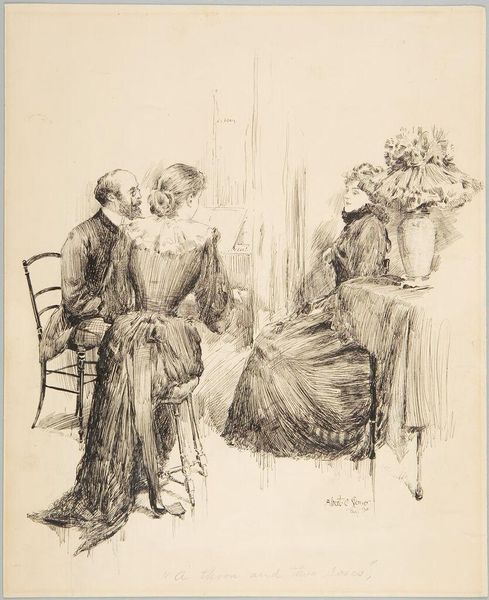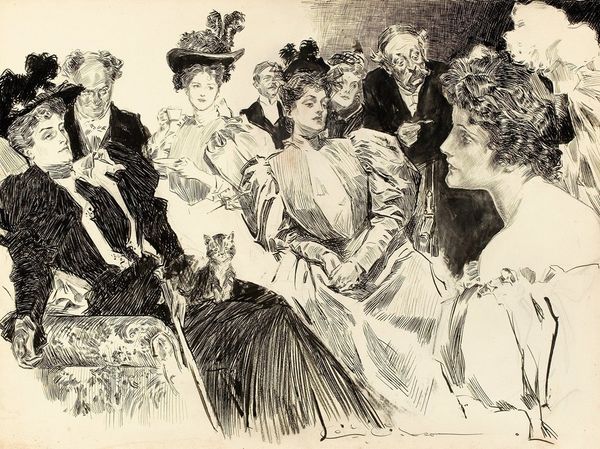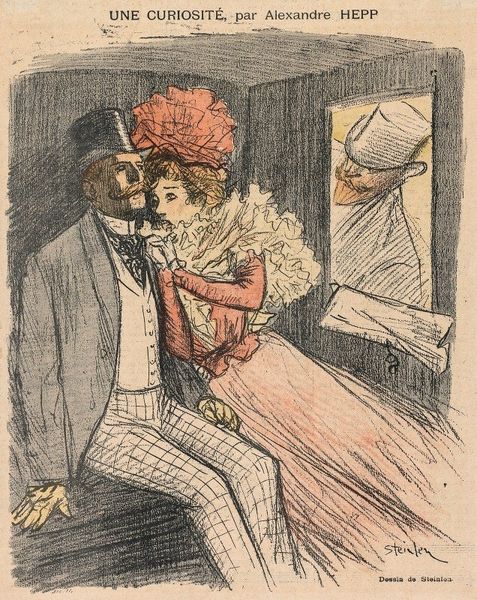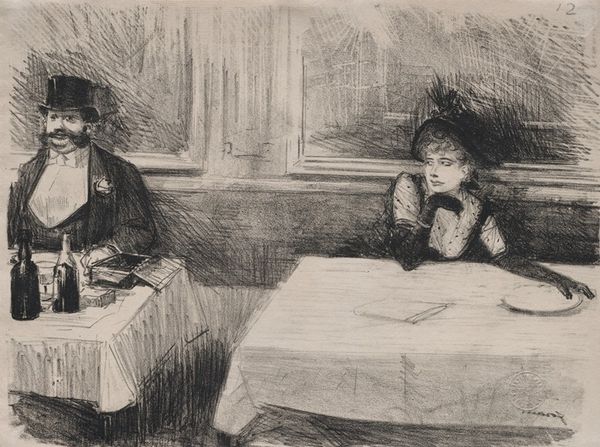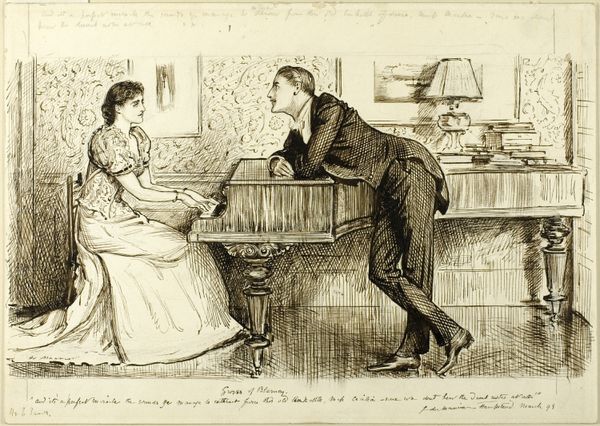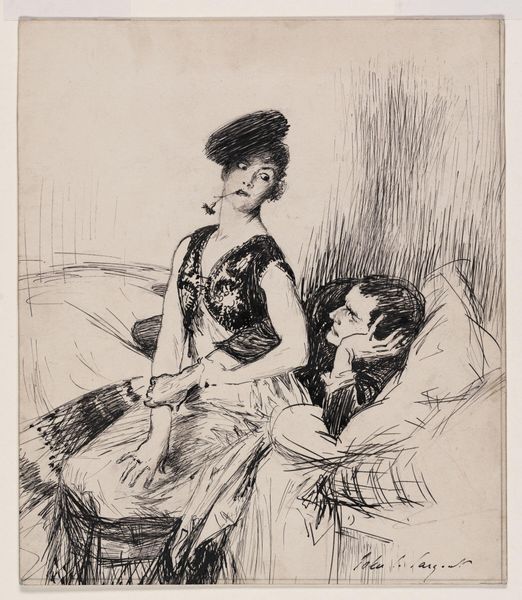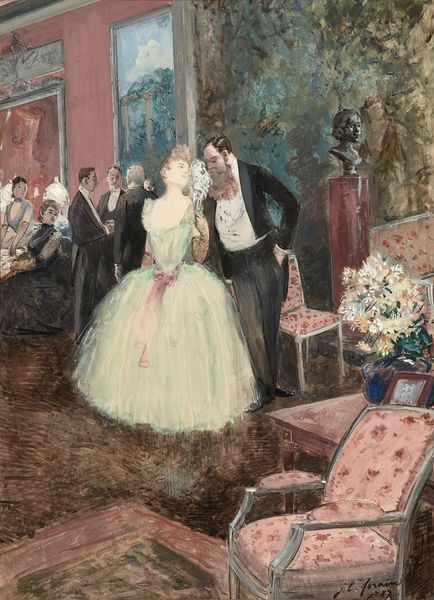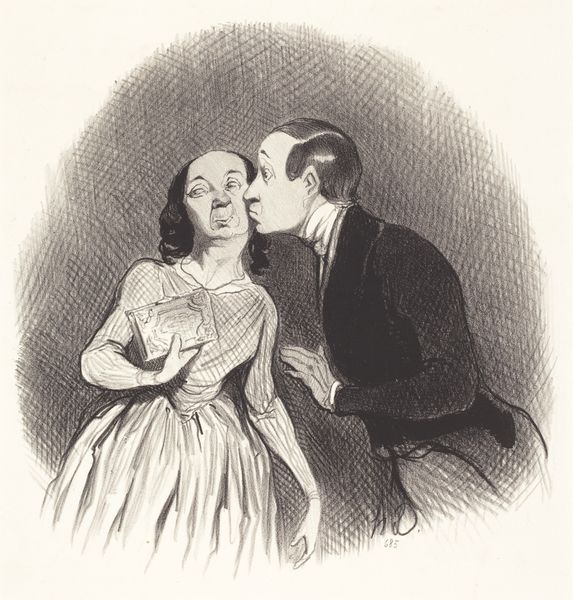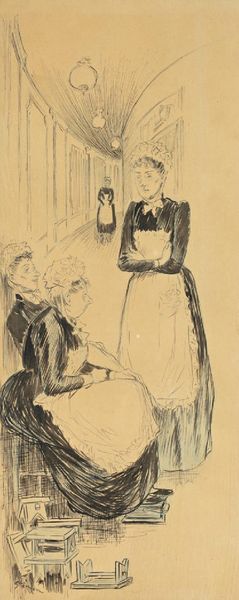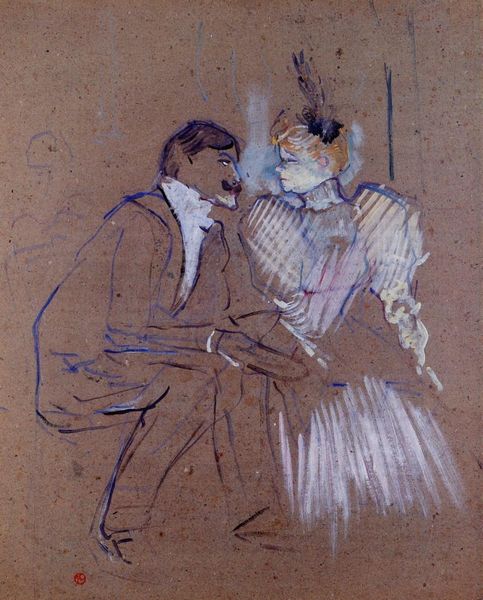
drawing, ink
#
portrait
#
drawing
#
ink drawing
#
figuration
#
ink
#
genre-painting
Copyright: Public Domain: Artvee
Editor: This ink drawing is entitled "The Proposal" by Charles Dana Gibson. The figures feel a bit theatrical, like actors frozen mid-scene. How might we begin to unpack its meaning? Curator: Let's consider the formal elements. Notice the artist’s sophisticated use of line. It is economical, yet descriptive. How does Gibson use line to define form and create tonal variation? Editor: Well, the density of hatching seems to indicate depth and shadow, particularly in the gentleman’s suit, making him feel more imposing. Curator: Precisely. The strong verticals and diagonals created by the hatching imbue the scene with a sense of restrained energy. And the composition, focusing on these three figures within this enclosed space, how do you interpret its effect on the narrative? Editor: I see your point. It directs our eye and emphasizes their relationships and unspoken anxieties. Do you think the lines forming the curtains have any symbolism? Curator: Observe the tension between the rigidity of the architectural setting, formed through long parallel lines, and the softness of the figures achieved by more varied, broken strokes. Is it too obvious a dichotomy, perhaps indicating conflict between expectations and personal feelings? Editor: So, form dictates feeling. Seeing how deliberately he manipulates line really reframes how I understand the image. It becomes less about sentimentality and more about… visual architecture? Curator: Indeed! Appreciating the structural components provides insight into both surface and depth, both narrative and form. A dialectic for greater art comprehension, I submit!
Comments
No comments
Be the first to comment and join the conversation on the ultimate creative platform.

